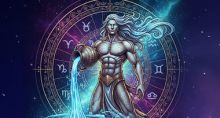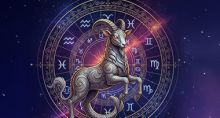History of Nag Panchami
Nag Panchami is an occasion dedicated to the worship of the snake-God. ‘Nag’ or ‘Naga’ is a snake and ‘Panchami’ is the fifth lunar day. This festival in honor of the snakes is thus observed on the fifth day of the Panchami thithi on the bright fortnight of the Moon during the month of Shravan, which corresponds to July–August.


Importance of Naga Worship
The religious tradition of this land regards Naga, the snake or serpent, as a divinity. The ancient people, both feared, and revered snakes and this belief continues to this day. Many legends and scriptures associate the Gods with the snakes. While Lord Vishnu, the God of protection and preservation has the serpent Adhisesha as his couch, Lord Shiva, the God of destruction, always adorns himself with another serpent around his neck. Our mythology claims that our Earth rests on Shesh Nag and that we experience earthquakes when he shakes his heads. Thus, snakes have always carried a lot of religious and spiritual significance.Antiquity of Nag Panchami
The snake-worship has a very ancient origin as references to it are found even in the Vedic texts. While there are distinct hints about snake-worship in Rig Veda, the earliest of Vedas, the Yajur Veda provides more specific details about the custom. There are specific pieces of evidence of this worship continuing in the post-Vedic periods too. While different serpent forms like the Nagas and the Sarpas find mention in the great epic Mahabharatha, Lord Krishna goes a step further in his exposition of the sacred Bhagavad Gita, wherein he avers that he is represented by Vasuki, the great Sarpa, and Ananta, the great Naga. The Bhagavata Purana, another holy text paints the picture of 12 mighty serpents including Vasuki forming the reins of the Sun God’s chariot and each of them being held as sacred during a particular month of the year. Panchatantra, the very famous fables too speaks in good detail about the serpents being held in high reverence by our ancients. Stone carvings of snakes are also found in many Hindu temples, whereas images of rituals related to snake-worship find a place in the internationally renowned Ajanta caves.
https://youtu.be/I5VIC-ptPd4
History of Nag Panchami
Snake-worship as a well-established practice is believed to have originated from the ‘Nagas,’ the highly civilized tribal inhabitants of ancient India. Archeological finds from the 5000-year-old Indus Valley civilization is said to provide substantial evidence in this regard. The Aryans who occupied the land subsequently seemed to have continued this worship, and these practices are said to have found mention in many of the scriptures and Puranas that were composed during those times. However, practical considerations are those which seemed to have contributed to snake worship. The Nag Panchami month of Shravan marks the advent of monsoon in many parts of the country. This is the time when the rain waters flood the lands and fields and enter the habitats of the snakes. The hapless reptiles thus get displaced from their homes and are forced to venture into the residential areas of the people. This results in reptile-human conflicts, snake bites, and even deaths. Our ancients must have thought that treating the snakes as Gods and worshipping them is the best way of avoiding such eventualities and fatalities, and it is this belief which must have given birth to the custom of snake-worship and led to the festival of Nag Panchami. Invoke the Blessings of the Snake Gods on Naga Chaturthi and Panchami to Alleviate Snake Afflictions and Receive Serpentine Blessings


















